
First, the good news: You cannot get lice from your dog, nor can your dog pick up this parasite from you. Lice are species-specific; those that thrive on human blood won’t change their dining preferences if they land on a dog, or vice versa.
But there is plenty of bad news where this parasite is concerned. Like the more common pest—fleas—a louse infestation, which is known by the scientific term pediculosis (from the Latin word for louse, which is pediculus), can cause itching, pain, inflammation, and hair loss. It can also lead to more serious health issues, so it’s important to learn to recognize and quickly eradicate lice if your pet is unlucky enough to pick them up.
Dog lice are small, flat, wingless six-legged insects that live in the hair and feathers of mammals and birds. Strong hook-like claws at the end of each leg allow them to hang on to the hair shafts. The claws are tailored to the specific size of the host’s hair shaft or feathers, which is why lice are species specific. They survive on skin debris, sebaceous secretions, feathers, or the blood of the host animal.
This video shows a louse under a microscope:
There are two types of lice:
You can see the parasite itself by parting the hair and examining the hair shaft. Adult lice are large enough to be visible to the naked eye, roughly the size of a sesame seed—about 3 millimeters—and are yellow to tan in color. They are sometimes mistaken for dandruff.
Chewing lice will move around more than the sucking lice, which, like ticks, embed their piercing mouthparts into the skin. If you suspect an infestation of dog lice, you might want to go over the area with a flea comb and examine the hair. One way to distinguish lice from dandruff is by shaking hair removed from the dog. If the small flakes fall off, it’s dandruff. If they cling stubbornly to the hair, it’s probably lice.
Other signs of lice infestations include:
Lice have limited mobility; they can crawl, but are unable to jump, hop, or fly. Also, adult lice die in a few days if they fall off the host. Transmission must be through direct contact with another infested animal. Lice may be a threat wherever dogs congregate, such as daycare centers, dog shows, and parks.
There are three stages to the louse life cycle:
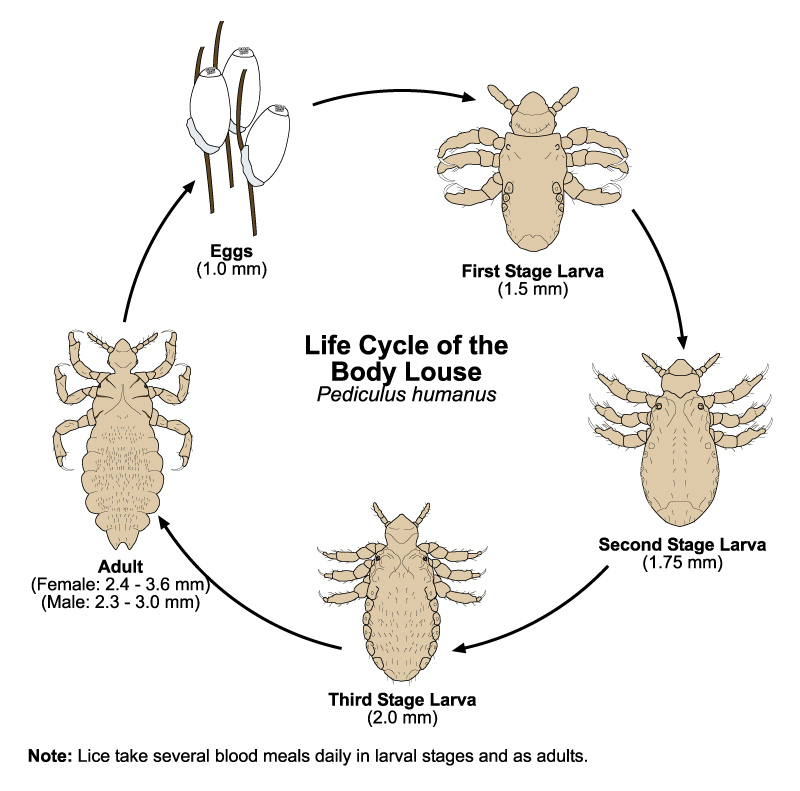
The cycle starts when the female lays tiny yellow or white eggs, referred to as “nits,” at the base of the hair shaft. These eggs are glued to the hair.
It takes about a week for the eggs to hatch, releasing the immature lice, known as “nymphs,” which are no larger than the head of a pin. After about a week, they enter the adult phase, starting the cycle all over again. The louse stays on the host, and females will lay eggs through their entire life, which is about 30 days.
Monthly flea and tick preventives have made lice infestations rare among well-cared for pet dogs. Today, lice are found mostly on animals who are old, sick, stray, or feral. To start, in severe infestations, matted hair should be clipped. You can also use flea combs to removed live and dead lice.
Many insecticides are effective treatments for lice in dogs. According to the Companion Animal Parasite Council (CAPC), Fipronil, imidacloprid, and selamectin are all effective. Topical permethrin can be used on dogs with good effect.
Be careful about using some of these products if you own cats as well as dogs, because they are toxic for cats.
Insecticide treatments will kill nymphs and adults, but will not eradicate the eggs, so any treatment will have to be repeated at regular intervals for a month or more. All dogs in the household should be treated.
Make sure you wash all bedding and thoroughly clean all areas where the dogs spend time to prevent a re-infestation. Lice generally attack dogs who are in poor health or who live in unsanitary areas. Improving the dog’s condition, through better nutrition, grooming, and housing, will go a long way to preventing future louse infestations.
Sources: The Merck Veterinary Manual; Fact Sheet, Animal Medical Hospital, West Vancouver, BC; Companion Animal Parasite Council
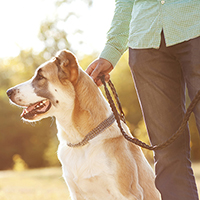
This e-book is a great resource for anyone who's considering dog ownership or already owns a dog. Download for tips on how to be the best dog owner you can be.
Get Free Download Now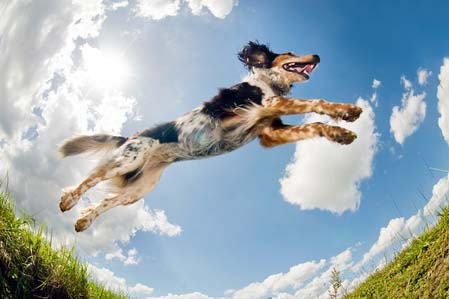 Summer Grooming: How to Keep the Outdoors Out
Summer is the perfect time to bond
Summer Grooming: How to Keep the Outdoors Out
Summer is the perfect time to bond
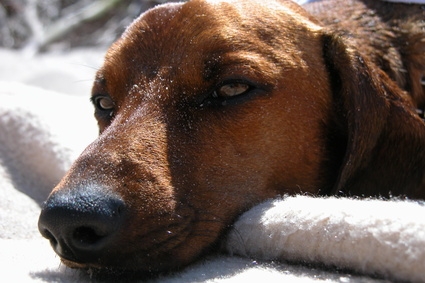 How to Mix Boiled Rice With Dry Dog Food
How to Mix Boiled Rice With Dry Dog Food
How to Mix Boiled Rice With Dry Dog Food
How to Mix Boiled Rice With Dry Dog Food
 How to Groom a Dog
Good grooming will help your dog lo
How to Groom a Dog
Good grooming will help your dog lo
 Four Tips For Choosing Edible Dog Chews
Dogs love to chew, and if you don’t give them an edible alte
Four Tips For Choosing Edible Dog Chews
Dogs love to chew, and if you don’t give them an edible alte
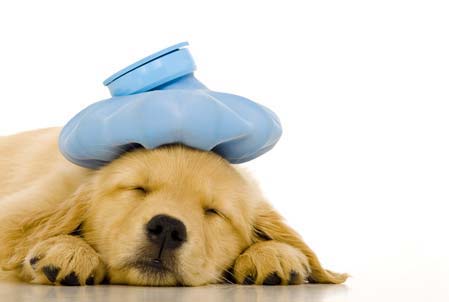 Aging Dogs
He's been your loving companion
Aging Dogs
He's been your loving companion
Copyright © 2005-2016 Pet Information All Rights Reserved
Contact us: www162date@outlook.com